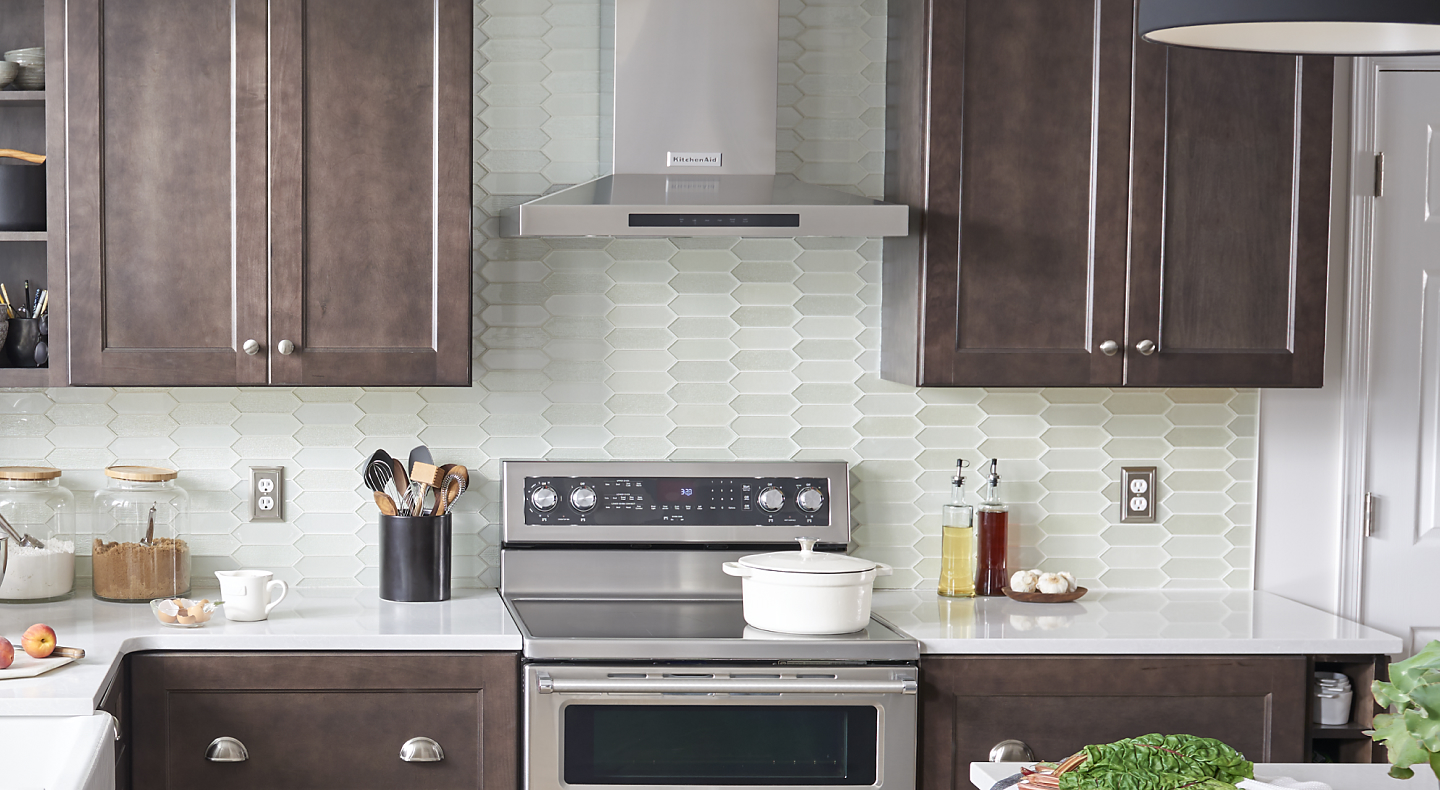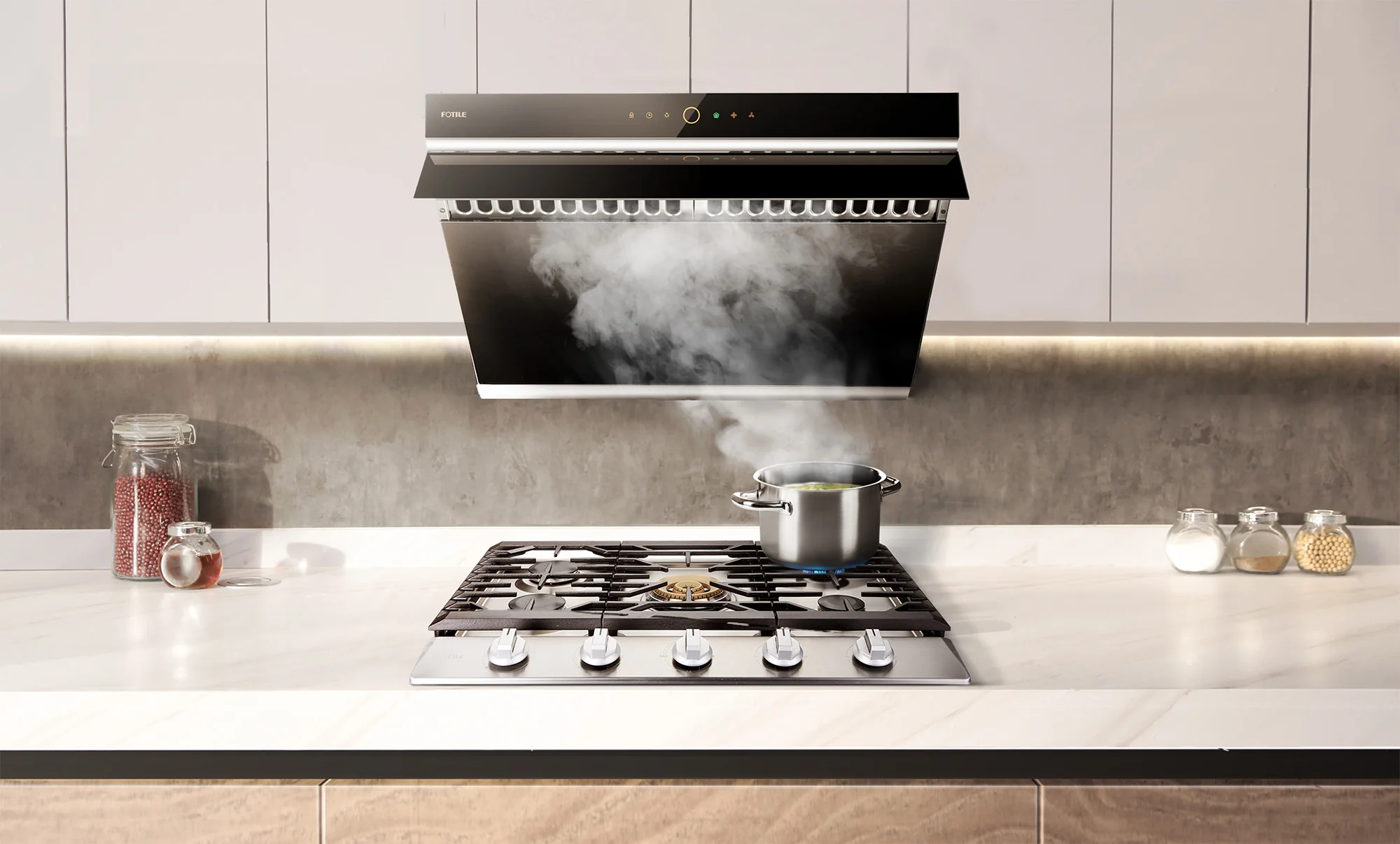Are you tired of dealing with smoke and lingering cooking odors in your kitchen? It’s time to find the perfect kitchen hood system for your home. In this ultimate guide, we’ll walk you through everything you need to know to make an informed decision.
Finding the right kitchen hood system can be a daunting task, with so many options available in the market. That’s why we’ve done the research for you and compiled all the essential information in one place. From understanding the different types of hoods to considering the size and CFM requirements, we’ve got you covered.
Whether you’re a gourmet chef or a casual cook, a kitchen hood system is a must-have for any modern kitchen. It not only improves air quality but also adds a touch of style to your space. With our expert tips, you’ll be able to choose the hood that suits your needs and complements your kitchen decor.
Don’t let smoke and odors take away the joy of cooking. Dive into this ultimate guide and discover the perfect kitchen hood system for your home.
Importance of a kitchen hood system
A kitchen hood system, also known as a range hood or exhaust hood, plays a crucial role in maintaining a clean and healthy kitchen environment. It helps to remove airborne contaminants, such as smoke, grease, and cooking odors, while also preventing the buildup of harmful gases, such as carbon monoxide.
One of the main benefits of a kitchen hood system is improved air quality. Cooking produces a variety of pollutants that can negatively impact indoor air quality, leading to respiratory issues and unpleasant smells. A good hood system effectively captures and removes these pollutants, keeping the air in your kitchen fresh and clean.
Additionally, a kitchen hood system can help to prevent the accumulation of grease on your kitchen surfaces. Grease particles released during cooking can settle on countertops, cabinets, and walls, creating a sticky mess that is difficult to clean. With a hood system in place, grease is captured before it has a chance to spread, making cleanup much easier.
Furthermore, a kitchen hood system can reduce the risk of fire in your kitchen. Cooking activities, especially those involving high heat, can lead to the formation of flammable substances. A hood system with proper ventilation helps to remove these substances, minimizing the chance of fire.

Different types of kitchen hood systems
When it comes to choosing a kitchen hood system, you’ll find a wide range of options available in the market. Understanding the different types of hoods can help you make an informed decision based on your specific needs and kitchen layout.
- Under-cabinet hoods: These hoods are installed underneath a cabinet or above the cooking range. They are a popular choice for kitchens with limited space as they don’t require additional wall or ceiling space. Under-cabinet hoods come in various sizes and designs, making it easier to find one that fits seamlessly into your kitchen decor.
- Wall-mounted hoods: As the name suggests, these hoods are mounted directly on the wall above the cooking range. They offer more flexibility in terms of installation height and can be an excellent choice for kitchens with high ceilings. Wall-mounted hoods often come with stylish designs, adding an aesthetic touch to your kitchen.
- Island hoods: If you have a kitchen island with a cooking range, an island hood is the perfect choice. These hoods are suspended from the ceiling, directly above the island. They provide optimal ventilation for island cooktops and create a focal point in your kitchen. Island hoods are available in various styles, from sleek and modern to classic and ornate.
- Downdraft hoods: Downdraft hoods are a unique option that sits behind or beside the cooking range and rises up when in use. They are a great choice for open-concept kitchens or when traditional hood installations are not feasible. Downdraft hoods offer an unobstructed view in the kitchen when not in use, as they can be hidden when not needed.
Each type of kitchen hood system has its own advantages and considerations, so it’s essential to evaluate your kitchen layout and cooking habits before making a decision.
Factors to consider when choosing a kitchen hood system
Finding the perfect kitchen hood system involves considering several factors that will ensure optimal performance and functionality in your kitchen. Here are some key aspects to keep in mind during your search:
Size and layout considerations
One of the first things to consider is the size of your kitchen and the available space for the hood system. Measure the area above your cooking range or island to determine the appropriate width and depth for your hood. Choosing a hood that is too small might not effectively capture all the pollutants, while a hood that is too large can overpower your kitchen’s aesthetic.
Additionally, consider the layout of your kitchen and the proximity of the hood to other kitchen elements. Make sure there is enough clearance between the hood and cabinets or other appliances to prevent any potential hazards. Taking these measurements into account will help you find a kitchen hood system that fits seamlessly into your kitchen space.
Ventilation power and noise level
The ventilation power of a hood system is measured in cubic feet per minute (CFM). CFM indicates the amount of air the hood can move in one minute. To determine the required CFM for your kitchen, calculate the volume of your kitchen by multiplying the length, width, and height, and then multiply that by the number of air exchanges per hour. Aim for a minimum of 15 air exchanges per hour for optimal performance.
It’s worth noting that higher CFM ratings are not always better. If the hood is too powerful for your kitchen, it can create negative pressure, which can draw in outside air through windows or doors and disrupt the overall airflow in your home.
In addition to ventilation power, consider the noise level of the hood system. Some hoods can be noisy, especially at higher speeds. Look for models that offer multiple fan speed options and have a reputation for quiet operation. This way, you can enjoy a peaceful cooking experience without the distraction of a noisy hood.
Types of filters and their efficiency
Filters play a crucial role in trapping grease and other airborne particles before the air is expelled from the hood system. There are various types of filters available, each with its own advantages and maintenance requirements.
- Mesh filters: Mesh filters, also known as aluminum or stainless steel filters, are the most common type found in kitchen hoods. They consist of multiple layers of mesh that capture grease and other particles. Mesh filters are relatively easy to clean, as they can be washed by hand or in a dishwasher. However, they may need frequent cleaning to maintain their efficiency.
- Baffle filters: Baffle filters are made of multiple layers of aluminum or stainless steel, similar to mesh filters. However, they have a curved design that helps to redirect airflow and capture more grease. Baffle filters are known for their high efficiency and low maintenance. They are dishwasher-safe and can be easily cleaned without losing their effectiveness.
- Charcoal filters: Charcoal filters, also known as carbon filters, are used in ductless hood systems. They help to remove cooking odors by absorbing them. Charcoal filters are not washable and need to be replaced periodically, usually every six months to a year, depending on usage. If you opt for a ductless hood system, consider the cost and availability of replacement filters.
Choosing the right filter type depends on your cooking style, the level of grease produced, and your preference for maintenance. Mesh and baffle filters are the most common and effective options for most home kitchens.
Ducted vs. ductless kitchen hood systems
Another important consideration when choosing a kitchen hood system is whether to opt for a ducted or ductless system. Here’s a breakdown of each option:
- Ducted hood system: A ducted hood system, also known as a vented or external hood, requires a duct that connects the hood to an exterior wall or roof vent. This type of system is highly effective in removing pollutants from your kitchen, as it expels them outside. Ducted hood systems offer superior ventilation compared to ductless systems. They remove not only smoke, odors, and grease but also excess heat, moisture, and carbon monoxide. If you frequently cook with high heat or use your kitchen for heavy-duty cooking, a ducted system is the recommended choice. However, installing a ducted system can be more complex and expensive, especially if you don’t already have a duct in place. It requires professional installation and may involve modifications to your kitchen’s structure. Additionally, ducted systems are not suitable for apartments or homes without access to an exterior wall or roof vent.
- Ductless hood system: A ductless hood system, also known as a recirculating hood, does not require a duct to the outside. Instead, it uses filters to capture grease and odors before recirculating the air back into the kitchen. Ductless systems are a more flexible option as they can be installed in any kitchen, regardless of the availability of a duct. Ductless hood systems are generally less expensive and easier to install compared to ducted systems. They are a popular choice for apartments or homes without access to exterior vents. However, they are not as effective in removing heat, moisture, and carbon monoxide from the kitchen. If you opt for a ductless system, consider the maintenance requirements of the filters, as they need regular cleaning or replacement to maintain their efficiency. Additionally, keep in mind that while a ductless system can help to remove cooking odors, it does not eliminate them entirely.
Design and aesthetics
Aside from functionality, the design and aesthetics of the kitchen hood system are important considerations. The hood should complement your kitchen decor and create a cohesive look. Fortunately, there are countless design options available to suit different styles and preferences.
Consider the material, color, and shape of the hood. Stainless steel hoods are a popular choice due to their sleek and modern appearance. However, if you prefer a more traditional or rustic look, there are hoods available in various finishes, such as copper or brass.
Additionally, consider the control options and lighting features of the hood system. Some hoods come with touch controls or remote controls for ease of use. Lighting features, such as built-in LED lights, can provide ample illumination for your cooking area.
Remember that the kitchen hood system will be a prominent feature in your kitchen, so take your time to find a design that you love and that complements your overall kitchen aesthetic.
Maintenance and cleaning tips for kitchen hood systems
To ensure the longevity and efficiency of your kitchen hood system, regular maintenance and cleaning are essential. Here are some tips to keep in mind:
- Clean the filters: Depending on the type of filters you have, clean them regularly or replace them as recommended by the manufacturer. Mesh and baffle filters can be washed by hand or in the dishwasher. Charcoal filters need to be replaced periodically.
- Clean the hood exterior: Wipe down the exterior of the hood regularly with a damp cloth and mild detergent to remove any grease or dust buildup. Avoid using abrasive cleaners that can damage the finish.
- Clean the fan blades: Over time, the fan blades can accumulate grease and dust, affecting the performance of the hood. Use a damp cloth or a brush to gently clean the blades, taking care not to bend them.
- Check and clean the duct (for ducted systems): If you have a ducted system, inspect the duct for any blockages or buildup of grease. Clean the duct periodically to ensure proper airflow.
- Inspect and clean the vent cover (for ducted systems): The vent cover on the exterior of your home can accumulate dirt, dust, and debris. Clean it regularly to maintain proper ventilation.
Regular maintenance and cleaning not only keep your kitchen hood system functioning optimally but also extend its lifespan. Refer to the manufacturer’s instructions for specific cleaning recommendations and frequency.
Finding the perfect kitchen hood system for your home
A kitchen hood system is an essential component of any modern kitchen. It improves air quality, removes smoke and cooking odors, and adds a touch of style to your space. By considering factors such as size, ventilation power, filter type, ducted or ductless, and design, you can find the perfect kitchen hood system to suit your needs and complement your kitchen decor.
Remember to take measurements of your kitchen space, evaluate your cooking habits, and consider the maintenance requirements before making a final decision. With proper research and consideration, you’ll be able to choose a kitchen hood system that brings both functionality and style to your home.
Don’t let smoke and odors take away the joy of cooking. Invest in a high-quality kitchen hood system and enjoy a clean and fresh kitchen environment for years to come. Happy cooking!
Contact Blaze Fire Protection Today
Ready to enhance the safety and efficiency of your kitchen with a top-of-the-line hood system? Contact Blaze Fire Protection today to schedule a consultation with our expert team. We’re here to ensure your kitchen operates smoothly and safely.




